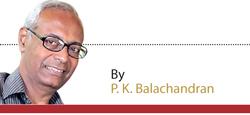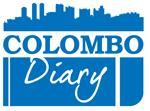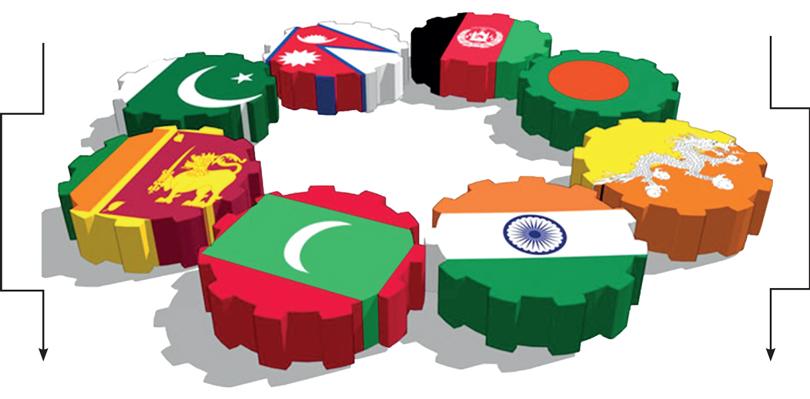Reply To:
Name - Reply Comment
 National emblems and symbols like flags and anthems are meant to be non-controversial because they are supposed to represent national unity. But they are often subjects of differences, and in a few cases, of litigation and boycott.
National emblems and symbols like flags and anthems are meant to be non-controversial because they are supposed to represent national unity. But they are often subjects of differences, and in a few cases, of litigation and boycott.
In India, both the national flag “tricolour” and the national anthem “Jana Gana Mana Adhinayaka”, have been hit by controversies.
As to who designed the flag with the Asoka Chakra in the middle, is still disputed. There is no doubt that the basic design had been provided by freedom fighter Pingali Venkayya in 1923, at the request of Mahatma Gandhi. But it is not clear as to who gave the idea of substituting the “chakra” or the spinning wheel in Venkayya’s flag, with the “Asoka Chakra”, in the national flag adopted at the time of independence in 1947.
Laila Tyabji, a Muslim lady from Hyderabad, claimed that the official national flag was designed by her mother, Suraiya Tyabji. Suraiya, a well known Delhi-based artist, had designed it as per a request made to her father Badruddin Tyabji by Prime Minister Jawaharlal Nehru.
But there is nothing on record to substantiate her claim other than the fact that Badruddin Tyabji was a member of the National Flag Committee and Suraiya was a well- known artist at that time.
 The truth could be somewhere in between. While the basic design was Pingali Venkayya’s, the decision to replace the spinning wheel with the Ashok Chakra could have been Nehru’s, given his passion for Buddhism and Emperor Asoka. Alternatively, Suraiya and Badruddin Tyabji could have anticipated Nehru’s wish and produced a proto type which the committee okayed.
The truth could be somewhere in between. While the basic design was Pingali Venkayya’s, the decision to replace the spinning wheel with the Ashok Chakra could have been Nehru’s, given his passion for Buddhism and Emperor Asoka. Alternatively, Suraiya and Badruddin Tyabji could have anticipated Nehru’s wish and produced a proto type which the committee okayed.
As regards the national anthem status of Rabindranath Tagore’s song Jana Gana Mana Adhinayaka Jaya Hey, it was contested from the word go. It was in competition with another powerful candidate “Vande Mataram” by Bankim Chandra Chattopadhyay. While Tagore’s song was about India’s natural bounties, “Vande Mataram” was part of a novel “Anandamath” on Hindu monks’ resistance to British rule during the 1770 Bengal famine. The song “Vande Mataram” idolized Mother India and was a battle cry during the Indian freedom struggle in the early 20th Century.
With “Vande Mataram” being Hinduistic in its imagery, the secular post-independence government of India led by Nehru chose the communally neutral Tagore song as the ‘national anthem’ but gave “Vande Mataram” the status of a ‘national song’ to placate the Hindu nationalists.
Additionally, it was alleged by some critics, that the term “Adhinayaka” or the “dispenser of destiny” was an allusion to King George V. When Tagore sang the song for the first time in 1911, King George had been crowned Emperor of India at a grand durbar in Delhi.
But Tagore refuted the charge, saying that: “neither the Fifth nor the Sixth nor any George could be the maker of human destiny through the ages.”
Another criticism was that the song mentions some regions and ethnic groups in India, while leaving out others. For example, Assam and the North East India are not mentioned. But Sindh, which is now in Pakistan, is mentioned. A demand was made to remove Sindh and put an existing Indian province in its place, but refugees from Sindh protested.
When the dispute was taken to the Supreme Court, the two-judge bench quashed the petition saying: “A national anthem is a hymn or song expressing patriotic sentiments or feelings. It is not a chronicle which defines the territory of the nation.”

Pakistan
In Pakistan, the East Pakistanis’ demanded the inclusion of a Bengali stanza in the national anthem. But this was turned down. The language of the anthem remained wholly Persian. Following that, there was a dispute over who wrote the “first” national anthem. The present one “Pak Sarzamin” written by Hafeez Jullandari, was officially adopted only in 1954, seven years after the creation of Pakistan.
Jagan Nath Azad, a Hindu/Urdu poet who was residing in Lahore in 1947 with an intention not to move to India after partition, claimed years later, that he had written the very first anthem in August 1947 and that was done at the invitation of Mohammad Ali Jinnah himself. Azad also claimed that the Karachi station of Radio Pakistan had broadcast it on August 14, 1947, the Independence Day.
But Aqeel Abbas Jaferi in his Urdu book entitled “Pakistan’s national anthem: what is fact, what is fiction?” showed that Azad’s claims had many holes. For example, Azad said that the Karachi station of Radio Pakistan had broadcast his song on the day Pakistan was born. But the Karachi station went on the air only later.
However, it is also a fact that there was a short-lived private radio station in Karachi at the time of independence and that station could well have broadcast it.
There was confusion about who set to tune the official anthem “Pak Sarzamin” written by Hafeez Jullundari. Officially, Ahmad Gulamali Chagla is recognized as the composer of the tune as he had won the national competition for it. But Rev. Fr. D’Arcy A. D’Souza claimed that the real composer was Tollentine Fonseca, a Karachi-based Western musician of Goan origin.
According to Fr. D’Souza, Chagla came to Tollentine and asked if he could compose a “really stirring tune”. Tolly, as he was known, produced six tunes, all of which were rejected by Chagla. In desperation Tolly composed the seventh, and avowedly, the last one. Chagla accepted the seventh. Tollentine then wrote the notations for the tune for a 21-piece naval band. However, Fr. D’ Souza’s story has not been verified yet.
What is more likely is that Chagla had composed the basic tune but might have sought Tollentine’s help to polish it and orchestrate it so that it can be played by a Western-style military band.
Bangladesh
When Bangladesh came into being in 1971, after a struggle with Pakistan, the new nation adopted Indian poet Rabindranath Tagore’s “Amar Shonar Bangla” as its national anthem, though in the struggle for Pakistan from 1906 to 1947, Muslim Bengalis had branded Tagore as a Hindu poet with little interest in the life of Bengali Muslims.
In fact, “Amar Shonar Bangla” was written in 1905 in opposition to the partition of Bengal into Hindu and Muslim regions. While the Muslims wanted partition, the Hindus opposed it tooth and nail.
However, the liberation movement in Bengali-speaking East Pakistan in the 1950s and 60s rehabilitated Tagore among Bengalis in East Pakistan. Pakistan banned Tagore songs. But this was defied. Tagore is now one of the icons of East Bengali Muslim renaissance.
However, an anti-liberation section led by the Jamaat-e-Islami kept opposing “Amar Shonar Bangla” both on political and religious grounds. The song identifies Bengal with the Mother, and uses the term “Maa” to denote Bengal, thus indirectly alluding to the Mother Goddess and transgressing Islamic injunctions.
But these objections were over-ruled as the song is mostly about the bounties and beauteousness of the Bengal countryside.
Sri Lanka
In Sri Lanka, the national flag and the anthem have been subjects of acrimony. The minority Tamils fighting for regional autonomy have been unhappy with the preeminent place given in the flag to the sword wielding lion, which is an emblem of Sinhala power.
The Tamil National Alliance (TNA) leader R.Sampanthan was mauled by fellow Tamils for waving the “Lion Flag” on stage on independence day, as the Leader of the Opposition. On another occasion, the Northern Province Education Minister K.Sarveswaran refused to hoist the national flag in protest against Sinhala hegemony and drew much flack from the rest of Sri Lanka.
In another incident in 2015, followers of the Sinhalese nationalist Gotabaya Rajapaksa waved lion flags without the mandatory orange and green stripes on them. These stripes denoted the minority Tamils and Muslims.
The Sri Lankan national anthem “Sri Lanka Matha” was sung both in Sinhalese and Tamil from the time of independence until the hardliner President Mahinda Rajapaksa unofficially banned it. But when the regime changed in 2015, the ban was lifted.